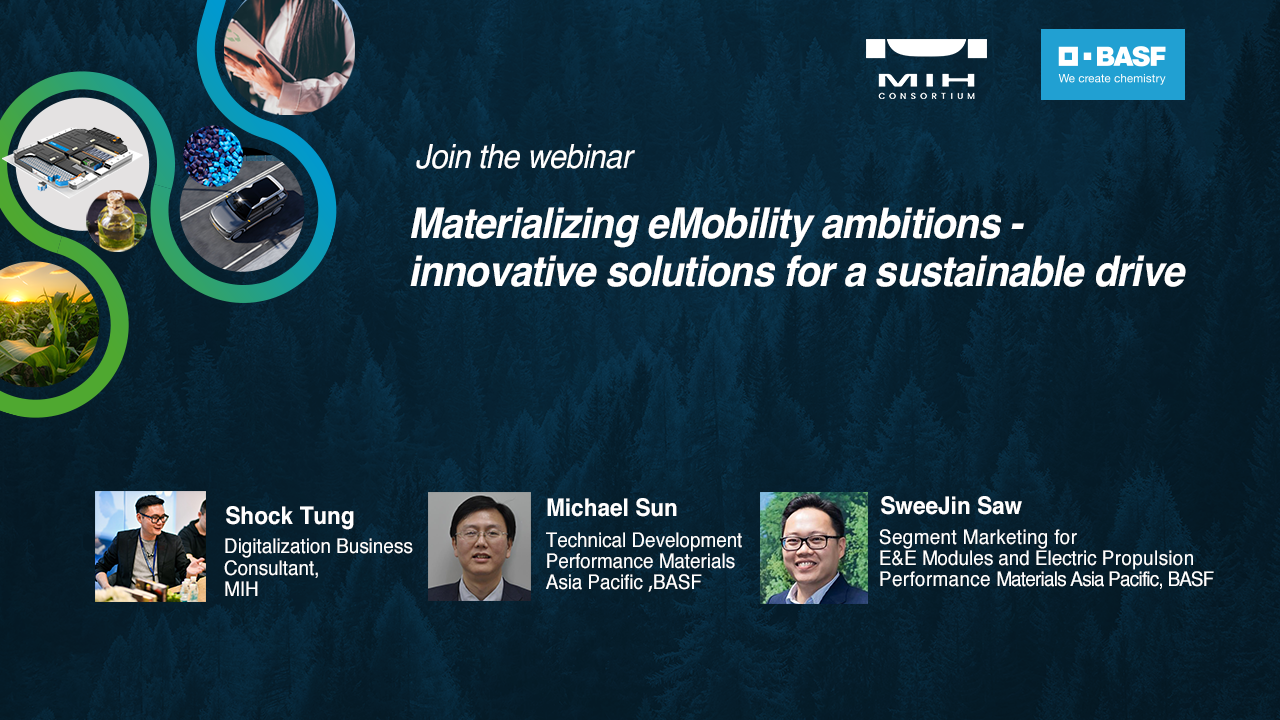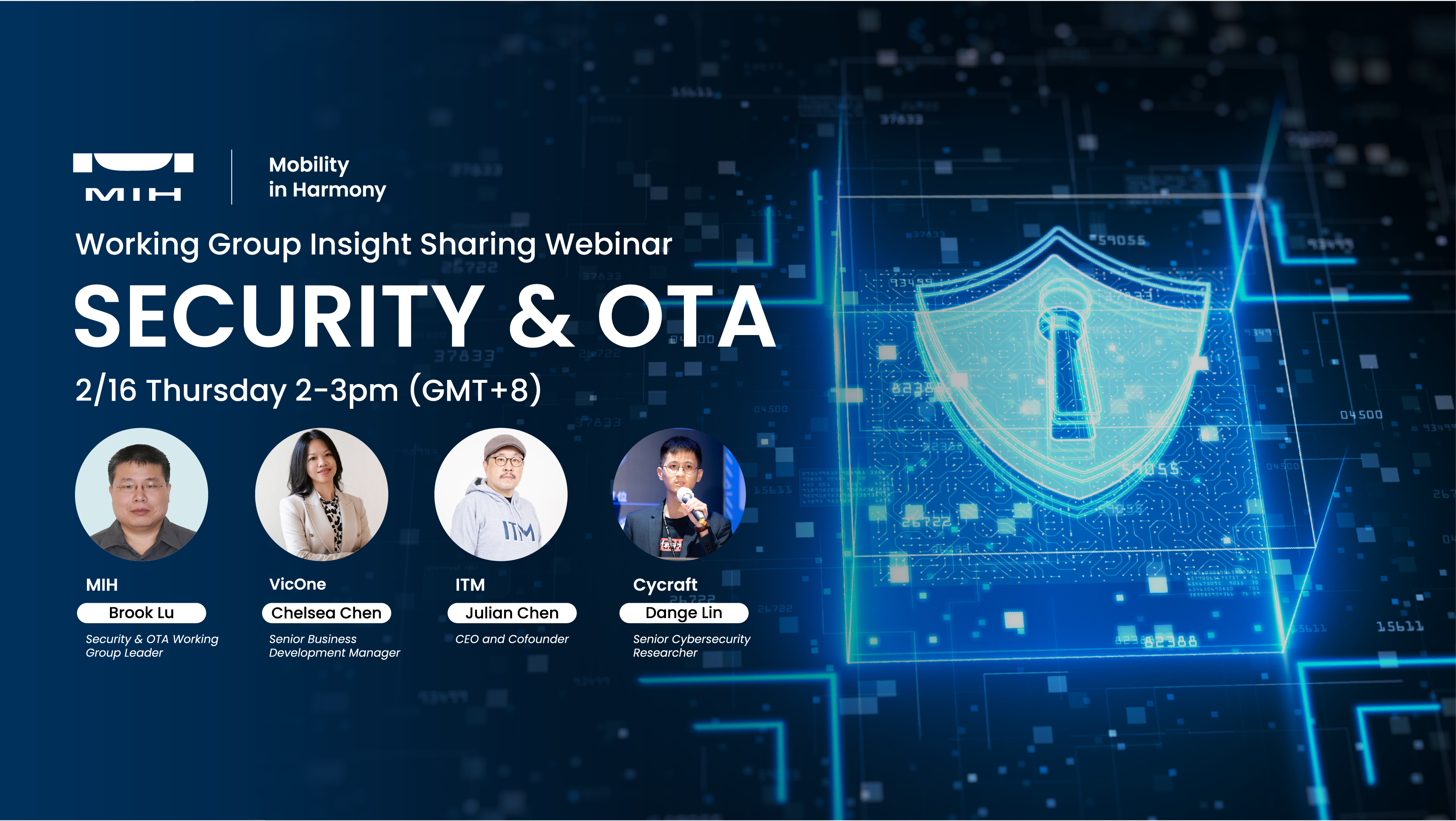The entire automotive industry is witnessing massive disruption. The future of automotive is not only electric but also autonomous. Among the 14 working groups currently planned by MIH Consortium, the Autonomy Working Group is dedicated to researching and developing vehicle driving automation systems, including Advanced Driver Assistance Systems (ADAS) and Autonomous Driving (AD).
Most people are familiar with a taxonomy for the Society of Automotive Engineers (SAE) six levels of driving automation: from Level 0 (fully manual) to Level 5 (fully autonomous). The Advanced Driver Assistance Systems (ADAS) technologies are classified as conditional autonomous driving, meaning the vehicle can assist with some driving tasks, and control its accelerating/decelerating and steering, for example. However, the driver still has primary control and still needs to have constant situational awareness and monitor the surrounding environment. Autonomous driving, on the other hand, requires zero human attention, and the vehicle is capable of performing all driving functions under any conditions
The traditional automobile industry is vertically integrated. Carmakers prefer proprietary designs and engineering by creating their own specification for components and products. As the leader of the open electric vehicle platform, MIH has three cores: Agnostic, Open, and Decentralized. MIH and partners are trying hard to set industry standards and develop the technologies and reference designs. Based on MIH's Agnostic strategy, the Autonomy Working Group is first to develop universal, cross-platform interfaces that can be deployed into different hardware models that are produced by various manufacturers. The concept is very similar to Android, the well-known mobile operating system. MIH wants to achieve the same goal for electric vehicles industry: to create key components that are easily implemented and compatible with different cars.
The biggest challenge is ensuring the interfaces are well-suited for all types of cars. Therefore, the Autonomy Working Group is working on APIs (Application Programming Interface) development. Since the automotive industry is moving into a “Software-Defined Vehicles” (SDV) era, developing adaptable APIs is the most promising and trend-oriented strategy, and then we can use APIs to control the vehicles and collect data. The Autonomy Working Group currently focuses on two parts: vehicle control and perception of the environment. Cars can be controlled through the skateboard, where the Drive by Wire (DbW) is used to manage the degree of longitude and latitude of the chassis.
The longitudinal direction is responsible for acceleration, deceleration, and braking; the lateral direction controls the steering wheel. The Autonomy Working Group has developed the first version of DbW API that connects with the chassis of different car manufacturers through the API (or middleware in the future). Another focus is the perception of environment involving different sensors, for example, Cameras, Lidars, Radars, mmWave Radar, Ultrasonic Sensor, and positioning systems such as Global Navigation Satellite Systems (GNSS), high-precision maps, etc. MIH collaborates with partners to develop APIs that can connect with various sensors.
MIH aims to create universal interfaces to accelerate car development, shorten the verification time, and bring EVs to market faster and more efficiently. Testing and certification are long and tedious processes. A universal interface enables automotive software and hardware partners to reduce development and verification time. Once the Autonomy working group's interface is standard, it will cooperate with the Testing & Certification team to aid in testing different sensor positions in and outside the vehicle. Complying with differing specifications, such as the testing of climate loads, requires working groups to join forces.
As L2 ADAS are increasingly common features on many new vehicles and with the technological advancement in advanced driver-assistance systems (ADAS), we believe Over-the-Air Technology (OTA) is the trend, allowing for updates/upgrades through wireless networks. However, regarding Level 4 and Level 5, the fully autonomous driving environment is quite complex. It still requires continuous evolution. Most car manufacturers only support Level 3 in specific scenarios under low-speed conditions; development for high-speed driving scenarios is ongoing.
The Autonomy Working Group cooperates with the Autoware Foundation (AWF). Autoware, supported by AWF, is the first open source software to achieve an All-in-One (perception, planning, and control) in a modular architecture for autonomous vehicles. Autoware Open AD Kit and MIH Open EV Kit aim to bring automotive-grade AD system solutions to the market.
The conventional automotive industry is vertically integrated. Each car makers prefer making their own specifications of their products, so the flexibility and diversity of suppliers is low. MIH's vision is to cultivate a more open industry culture during this critical transition from gas to electricity to popularize electric vehicles in the world. MIH intends to expand its network, inviting different fields and technologies to work together in accelerating electrification standardization.
 Tony Chen, MIH Technical Development Consultant
Tony Chen, MIH Technical Development Consultant
More than 20 years of cross-field working experience, including R&D, manufacturing and product planning of displays, servers and network communications, which passed ISO-26262 automotive functional safety certification, and obtained 16 multi-national invention patents for displays and control systems. Used to work at Philips Semiconductors and Wistron.
![[Expert Views] How Tesla Explores its Patent Assets](https://www.mih-ev.org/s3/mih%2Fwp-content%2Fuploads%2F2023%2F01%2FWispro-Expert-Views.png)
Wispro
2023-05-26

MIH Consortium
2023-03-20

MIH Consortium
2023-02-22